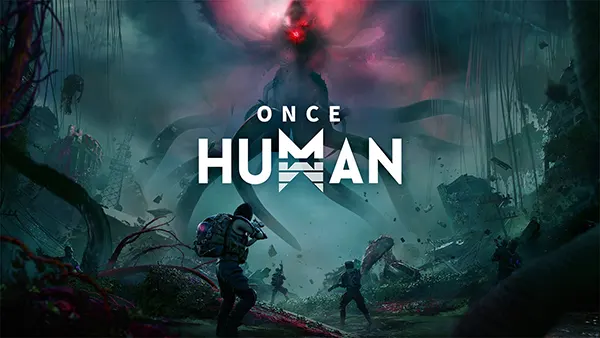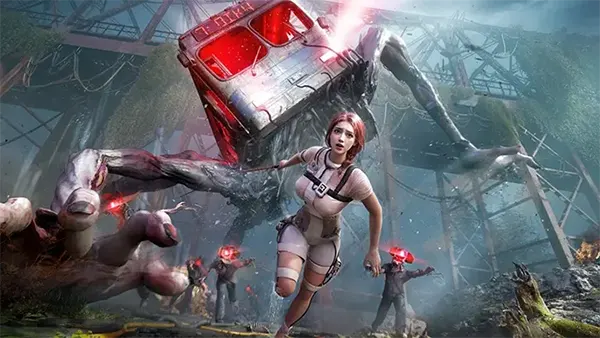
Once Human Mobile: Survival in an Open-World Post-Apocalypse
Once Human Mobile is an ambitious survival-action game set in a hostile post-apocalyptic world transformed by a mysterious alien substance called Stardust. Developed by Starry Studio using Unreal Engine 5, the game blends deep exploration, intense combat, and base-building mechanics into a fully online multiplayer experience. With the mobile version launching in August 2025, it promises to bring the full survival gameplay experience to smartphones without compromise.
The World After Stardust
The game takes place after the collapse of human civilisation, triggered by the arrival of Stardust — a parasitic extraterrestrial material that mutates the environment and all living things. Human cities have fallen, nature has become twisted, and terrifying new lifeforms have emerged. Survivors face both external threats and internal psychological challenges as they try to rebuild.
Exploration is central to the experience. The open world features expansive wastelands, haunted forests, derelict urban zones, and abandoned scientific outposts. Each location contains hidden lore, unique threats, and environmental storytelling. Players must scavenge, defend, and adapt in a constantly shifting world shaped by past trauma and alien influence.
The narrative is fragmented and delivered through environmental clues, notes, NPC dialogues, and audio logs. Rather than presenting a linear storyline, the game invites players to piece together humanity’s downfall and their own role in the new order.
Ecology and Threats
Stardust’s corruption has reshaped ecosystems entirely. Biomes now display erratic weather, corrupted flora, and monstrous fauna. Enemies include mutated humans, biomechanical beasts, and grotesque hybrids that defy conventional logic. Many areas are unrecognisable, pulsating with alien energy and danger.
Hostility scales dynamically. As players progress, enemy behaviour becomes more advanced — faster, tougher, and smarter. This escalating challenge encourages strategic thinking and forces players to upgrade their equipment and skills regularly.
The EGOIST faction acts as a major antagonist, conducting unethical experiments with Stardust. Their troops possess high-tech gear and can control mutated creatures, creating advanced combat scenarios in both PvE and PvP encounters.
Core Gameplay and Survival Mechanics
Survival in Once Human is not limited to fighting monsters. Players must manage hunger, thirst, temperature, and mental stability. Crafting tools, purifying water, building shelter, and maintaining psychological resilience are crucial for long-term survival in the contaminated zones.
Base building allows for full customisation. Structures can include defences, workshops, farms, and laboratories. Players may construct solo hideouts or cooperate with others to create shared strongholds. The building system is grid-based but flexible, supporting creativity without compromising practicality.
Character progression is skill-driven. Rather than relying on traditional XP systems, players level up by performing actions — cooking boosts culinary skills, fighting improves strength, and healing others advances medical knowledge. This system rewards immersive gameplay and specialisation.
Weapons and Equipment
Once Human features a wide range of weapons, from improvised melee tools to futuristic firearms. Each weapon can be modified with scopes, silencers, stabilisers, or elemental effects. Customisation allows players to tailor loadouts for stealth, power, or support roles.
Unique infected gear offers strong bonuses but comes with side effects. For example, a helmet might improve stamina at the cost of sanity. This risk-reward element adds tension to equipment choices, especially in late-game zones where every decision matters.
Armour is equally diverse, with suits offering protection from radiation, toxins, or cold. Completing full sets unlocks passive abilities, giving dedicated players a strategic edge in both exploration and combat scenarios.

Multiplayer and Mobile Adaptation
While solo play is possible, the game thrives in its online ecosystem. Players can join alliances, share resources, defend territory, and coordinate raids against enemy factions or boss-level creatures. Multiplayer is deeply integrated into all systems, from trading to warzones.
The mobile version will support full cross-platform progression with PC. All features — exploration, combat, building, and skill progression — are retained. The interface has been redesigned for touchscreen devices, while visual fidelity remains high due to effective optimisation for modern smartphones.
Following successful closed beta tests, the full mobile release is scheduled for August 2025. It will launch globally with English as the primary language, alongside additional localisation options planned post-launch.
Monetisation and Longevity
The monetisation model focuses on fairness. Cosmetic items — such as character skins, visual effects, and base decorations — are available for purchase, but there are no pay-to-win mechanics. All gameplay-affecting items must be earned through in-game effort.
A seasonal pass system provides optional rewards like animations, banners, and themed costumes. While premium, these items do not impact player stats or competitive balance. This system rewards engagement without disadvantaging those who play for free.
The developers aim to support the game as a long-term service. Frequent updates will introduce new biomes, missions, threats, and quality-of-life improvements. Player feedback from testing phases has directly shaped development priorities and balance adjustments.
